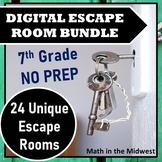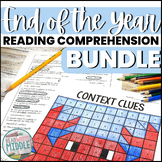42 results
7th grade astronomy lectures for Microsoft Word
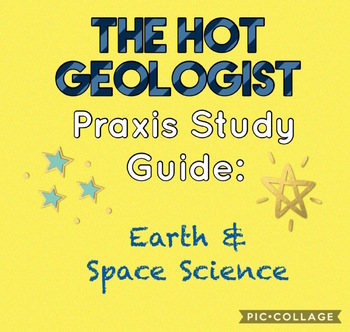
Earth Science Praxis Exam Study Guide
Need to get the extra certification to become more qualified? Say no more!
I made this study guide based on the PDF from the Praxis site: https://www.ets.org/s/praxis/pdf/5571.pdf
Includes all test specifications and sections needed to know for the exam!
> I passed for my state standards from studying this study guide I made! Good luck, studying one page a day helps!
MY STUDY TIPS:
• Study every day.
• Study a page a day, and also go back to old material to refresh.
• Pick a time of
Subjects:
Grades:
7th - 12th
Types:
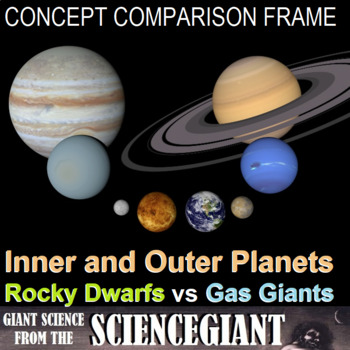
Concept Compare: The Inner and Outer Planets (rocky dwarf vs. gas giant)
How are the other planets of our solar system different from Earth? This Concept Comparison Frame helps students contrast the Inner and Outer Planets, with the terrestrial rocky dwarfs of Mercury, Venus, Earth and Mars on the one side, and jovian gas giants of Jupiter, Saturn, Uranus, and Neptune on the other. The Concept Comparison Routine is used help compare and contrast key concepts. Specifically, students use like and unlike characteristics and categories shared and not shared by two or mor
Subjects:
Grades:
6th - 12th
NGSS:
MS-ESS1-3
Also included in: StayGiant Earth Science Bundle: Astronomy (space exploration)
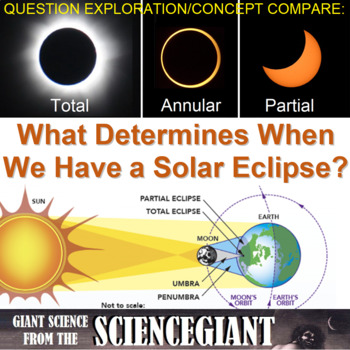
Concept Compare and Question Explore: Solar Eclipse on January 14, 2029
Why do eclipses happen? Why doesn't every new moon result in a solar eclipse? This question exploration helps students explain What determines when do we have a solar eclipse? It also includes: a concept comparison of three solar eclipses visible in the United States: a partial eclipse on Wednesday, January 26, 2028 and Sunday, January 14, 2029; an annular eclipse on Thursday, June 11, 2048; and a total solar eclipse of Wednesday, March 30, 2033 (only visible in Alaska. For the lower 48 states,
Subjects:
Grades:
7th - 10th
NGSS:
HS-ESS1-4
, MS-ESS1-1
Also included in: StayGiant Earth Science Bundle: Astronomy (space exploration)

Concept Compare: Kepler's (and Newton's) Laws of Planetary Motion for Orbits
This concept comparison is between: Kepler's Laws of Planetary Motion, and how they relate to Newton's Laws of Motion and the Law of Universal Gravitation. Bring a calculator!The Concept Comparison Routine is used help compare and contrast key concepts. Specifically, students use like and unlike characteristics and categories shared and not shared by two or more concepts to better understand the overall concept. Students taught using the Content Enhancement routines earned higher total test scor
Subjects:
Grades:
7th - 12th, Higher Education
NGSS:
HS-ESS1-4
Also included in: StayGiant Earth Science Bundle: Astronomy (space exploration)
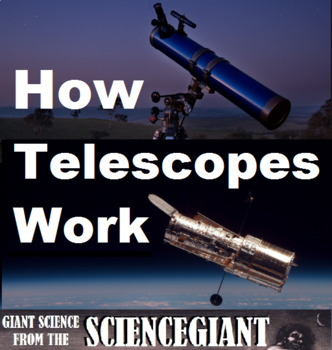
Concept Compare: Great Galileo! How Telescopes Work (refractor,reflector,radio)
What are telescopes and how do they work? This Question Exploration helps Ss explain how do different types of telescopes work. The Concept Comparison contrasts refracting, reflecting and radio telescopes. And there is a Frame reviewing the astronomical accomplishments of the first champion of telescopes -- Galileo Galilei. Magnifico!Framing Routines and Question Exploration Routines are instructional methods that teachers can use to help a diverse student population understand a body of content
Subjects:
Grades:
7th - 10th
NGSS:
HS-PS4-5
, MS-PS4-2
, HS-PS4-1
Also included in: StayGiant Physics Bundle: Optics

Question Exploration: What Causes Seasons and the Solstices?
What Causes Seasons and Solstices? This question exploration helps students explain how the Earth has seasons because its axis is tilted. Earth rotates on its axis as it orbits the Sun, but the axis always points in the same direction, creating a North Pole!The resource also includes reading excepts:"The Measure of Eratosthenes" by Carl Sagan. From the first episode of Cosmos, Sagan easily proved the Earth was a sphere using the summer solstice, the shadows of some sticks, a piece of cardboard,
Subjects:
Grades:
7th - 12th
NGSS:
HS-ESS2-4
, MS-ESS2-6
, MS-ESS1-1
Also included in: StayGiant Earth Science Bundle: Astronomy (space exploration)

Question Exploration: What Are the Solar Activity Sunspot Cycles?
What are the solar activity sunspot cycles? Sunspots increase and decrease through an average cycle of 11 years. This Question Exploration helps Ss explain how the spotless Sun turns dark, releasing solar flares and coronal mass ejections (CMEs).Question Exploration Routine is an instructional methods that teachers can use to help a diverse student population understand a body of content information by carefully answering a critical question to arrive at a main idea answer. The Concept Comparis
Subjects:
Grades:
7th - 12th, Higher Education
Types:
NGSS:
HS-ESS1-1
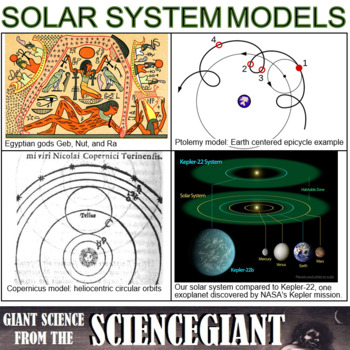
Concept Comparison and Question Exploration: Models of the Solar System
What are historical models of the solar system? This Question Exploration and Concept Comparison helps Ss contrast geocentric model painted in ancient temples, to heliocentric models photographed in modern telescopes. Question Exploration Routine is an instructional methods that teachers can use to help a diverse student population understand a body of content information by carefully answering a critical question to arrive at a main idea answer. Students taught using the question exploration r
Subjects:
Grades:
7th - 10th
NGSS:
HS-ESS1-4
, MS-PS2-4
, MS-ESS1-2
, HS-PS2-4
Also included in: StayGiant Earth Science Bundle: Astronomy (space exploration)
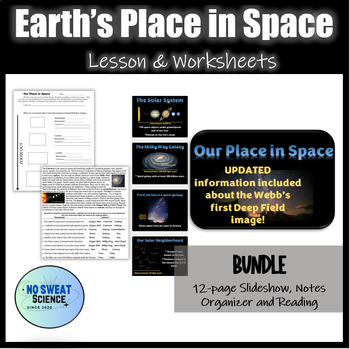
Earth's Place in Space Astronomy Worksheet and Slideshow Presentation Bundle
A collection of a PowerPoint, notes organizer worksheets and a reading reinforcement worksheet all included to teach your students about our unique place in space! ✔️Updated information about the James Webb's first Deep Field image!✔️Solar system crossword included as a bonus!
Subjects:
Grades:
4th - 9th
Types:
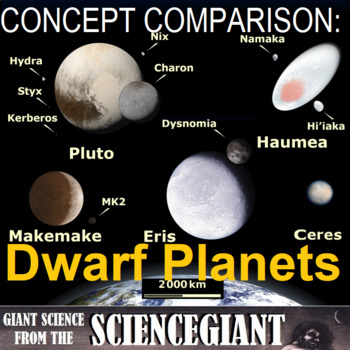
Concept Comparison: Dwarf Planets (Ceres, Pluto, Huamea, Eris, and Makemake)
This Concept Comparison Frame contrasts the dwarf planets CPHEM (Ceres, Pluto, Huamea, Eris, and Makemake). These round worlds orbit the Sun but didn't completely clear their neighborhood (one is in the asteroid belt and the rest are in the Kuiper Belt). It helps Ss explain how these rocky and icy minor planets are just as important to understanding the solar system as gas giants. The Concept Comparison Routine is used help compare and contrast key concepts. Specifically, students use like and u
Subjects:
Grades:
6th - 12th
NGSS:
HS-ESS1-4
, MS-ESS1-3
Also included in: StayGiant Earth Science Bundle: Astronomy (space exploration)
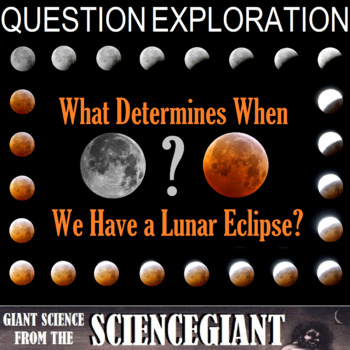
Concept Compare and Question Explore: Lunar Eclipse of 14 March 2025
Why doesn't every full moon result in a lunar eclipse? This question exploration helps Ss explain what determines when the Moon will be eclipsed, as on Friday, March 14, 2025 at 3 AM Eastern? Resource also includes a concept comparison of solar and lunar eclipses; and types of eclipses (total, partial, penumbral (lunar), and annular (solar). Actitivies and assessments for this resource include:a whole class formation activity to make a human model of a lunar eclipse, a math activity to make an u
Subjects:
Grades:
5th - 12th
NGSS:
HS-ESS1-4
, MS-ESS1-1
Also included in: StayGiant Earth Science Bundle: Astronomy (space exploration)

Question Explore: What Methods Measure Ultra Space Deep Distances? Parallax
This Question Exploration asks the Essential Question about cosmic distances: What Methods Do Astronomers Use to Measure Ultra Deep Space Distances? (from radar and parallax, to standard candles and Tully-Fisher Relationship used to measure distances to galaxies).Included are two activities on the scale of the universe for student assessment to be used as a warm up or after class review. The first is a classroom formation line-up, the other is a two-inch universe modeling about scale and ratios.
Subjects:
Grades:
7th - 11th, Higher Education
NGSS:
5-ESS1-1
, MS-ESS1-2
Also included in: StayGiant Earth Science Bundle: Astronomy (space exploration)
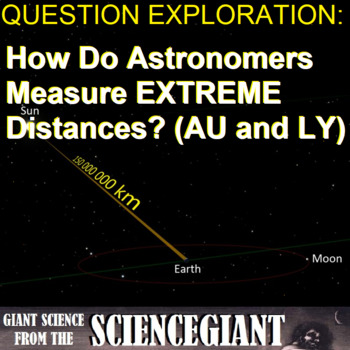
Question Exploration: How Do Astronomers Measure Extreme Distances? (AU and LY)
This Question Exploration asks the Essential Question about cosmic distances: How Do Astronomers Measure Extreme Distances? (astronomical units and light years )Question Exploration Routine is an instructional methods that teachers can use to help a diverse student population understand a body of content information by carefully answering a critical question to arrive at a main idea answer. Students taught using the question exploration routine earned higher total test scores than did students t
Subjects:
Grades:
7th - 10th
Also included in: StayGiant Earth Science Bundle: Astronomy (space exploration)

Question Exploration: What Determines the Life Span of a Star?
When Will the Sun Burn Out? Will the Sun ever blow up and kill us all? This Question Exploration helps Ss answer the Essential Question: What Determines the Life Span of a Star like the Sun?Question Exploration Routine is an instructional methods that teachers can use to help a diverse student population understand a body of content information by carefully answering a critical question to arrive at a main idea answer. The Concept Comparison Routine is used help compare and contrast key concepts
Subjects:
Grades:
7th - 10th
NGSS:
MS-ESS1-4
, HS-ESS1-3
, HS-ESS1-1
Also included in: StayGiant Earth Science Bundle: Astronomy (space exploration)

Question Exploration: What Was the Space Race? (Rocket Rivals Russia and USA)
What Was the Space Race? This Question Exploration helps Ss explain What are key events, developments and achievements in the early history of space exploration during the rocket rivalry between Russia and America? It spans from October in 1957 with the launch of first satellite Sputnik 1, to the International Space Station today.Question Exploration Routine is an instructional methods that teachers can use to help a diverse student population understand a body of content information by carefull
Subjects:
Grades:
7th - 11th
NGSS:
HS-ETS1-3
, HS-ETS1-1
Also included in: StayGiant Earth Science Bundle: Astronomy (space exploration)

Earth's Motions Bundle w/Key
This bundles includes power point presentations and scaffolded/guided notes for all lessons which include: Earth's Rotation, Earth's Revolution, and Celestial Sphere. Altitude of the Noon Sun lab/activity/investigation and Rotation Revolution Exam. Bonus: sun's path diagram worksheet which can be used in addition to the celestial sphere lesson or a springboard from the lesson. It has 15 questions following the activity. Kindly leave a review of my work, it will help me create future products.
Subjects:
Grades:
6th - 12th, Higher Education, Adult Education, Staff
Types:

FRAME: McElligot's Pool and The Drake Equation - Search for SETI with Dr. Seuss
Because you never can tell what goes on down belowThis pool might be deeper than you or I know!McElligot's Pool and the Drake Equation uses the fanciful imagination of Dr. Seuss and the fish in McElligot's Pool to engage Ss in the extraordinary topics of alien life and space exploration. Marco daydreams of all the possibilities that await him while he fishes in McElligot’s Pool. After a read-aloud of an abridged McElligot’s Pool, the frame routine helps Ss explain how the Drake Equation is a tho
Subjects:
Grades:
6th - 11th
NGSS:
HS-ESS1-6
, HS-PS4-5
, HS-ESS2-7
Also included in: StayGiant Earth Science Bundle: Astronomy (space exploration)
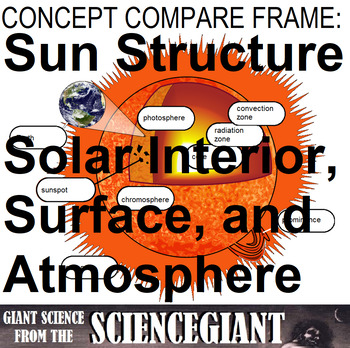
Concept Compare Frame: Solar Structure (Interior, Surface, and Atmosphere)
This Framing Routing helps answer the Essential Question: What is the structure of the Sun? (solar interior, solar surface, and solar atmosphere)The Framing Routine is used in conjunction with a graphic organizer called a "Frame" to develop a thorough understanding of information associated with key topics and main ideas. The Frame helps students study essential information and focus on relationships between several main ideas and details. Students taught using Content Enhancement routines earne
Subjects:
Grades:
7th - 10th
NGSS:
HS-ESS1-1
Also included in: StayGiant Earth Science Bundle: Astronomy (space exploration)
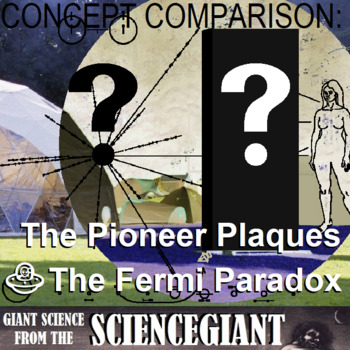
FRAME: The Pioneer Plaques, the Arecibo Message and the Fermi Paradox
It’s quiet out there. TOO quiet. Despite decades of sending signals and spacecraft, despite the math telling us that they exist, no aliens have responded. Are we alone? If advanced alien civilizations are out there, why haven’t we heard from them? Scientists call this Fermi’s Paradox, or The Great Silence. This FRAME Routine helps Ss explain human's first-best efforts to contact extraterrestrials: by mail and by LONG long distance call, with the Pioneer Plaques and the Arecibo Message respectiv
Subjects:
Grades:
6th - 12th, Higher Education
NGSS:
HS-PS4-2
, 4-PS4-3
, MS-PS4-3
Also included in: StayGiant Earth Science Bundle: Astronomy (space exploration)
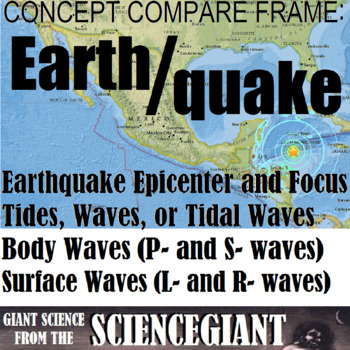
Concept Compare: Earthquakes (Epicenter/Focus; Tidal Waves/Tsunami; P/S Waves)
This Earthquake Concept Comparison contrasts seismic events at epicenter and focus at fault lines; among wind-driven waves, tides,and tsunami; and between body waves (P-waves and S-waves) and surface waves (L-waves and R-waves). Concept Comparison Routines are used help compare and contrast key concepts. Specifically, students use like and unlike characteristics and categories shared and not shared by two or more concepts to better understand the overall concept. Students taught using the Conten
Subjects:
Grades:
7th - 10th
Also included in: StayGiant Earth Science Bundle: Geology (plate tectonics)
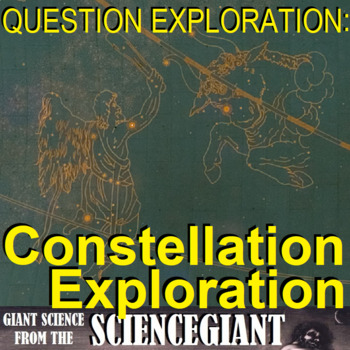
Question Exploration: What Are Constellations and Asterisms?
What are the Constellations and Asterisms? This Question Exploration helps Ss understand how constellations are created, and asterisms are arranged. A constellation is a grouping of stars which form a pattern in the sky that is traditionally named after its apparent form or mythological figure. Modern use of constellations includes identification of general locations for stars and galaxies. Ss are also introduced to the Bortle Scale as a measure of how many stars are visible in an observer's nig
Subjects:
Grades:
5th - 12th, Higher Education
CCSS:
NGSS:
5-ESS1-2
, 5-ESS1-1
Also included in: StayGiant Earth Science Bundle: Astronomy (space exploration)
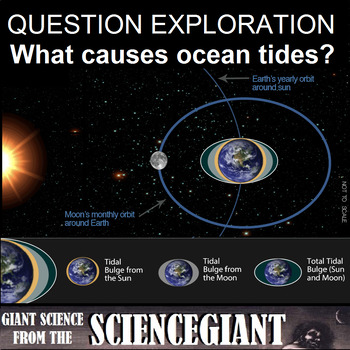
Question Exploration: What Causes Tides? (High and Low, Spring and Neap)
This Question Exploration asks the Essential Question: What Causes Ocean Tides? On Day One, we explore high and low tides. On Day Two, we explore spring and neap tides. Question Exploration Routine is an instructional methods that teachers can use to help a diverse student population understand a body of content information by carefully answering a critical question to arrive at a main idea answer. Students taught using the question exploration routine earned higher total test scores than did st
Subjects:
Grades:
7th - 10th
Also included in: StayGiant Earth Science Bundle: Astronomy (space exploration)
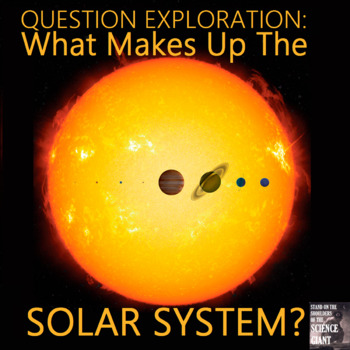
Question Exploration: What Makes Up the Solar System?
This Question Exploration helps students answer What Makes Up the Solar System? What Makes Solar Systems? How Do Solar Systems Form?Question Exploration Routine is an instructional methods that teachers can use to help a diverse student population understand a body of content information by carefully answering a critical question to arrive at a main idea answer. Students taught using the question exploration routine earned higher total test scores than did students taught using the lecture-discu
Subjects:
Grades:
6th - 10th, Higher Education
Also included in: StayGiant Earth Science Bundle: Astronomy (space exploration)
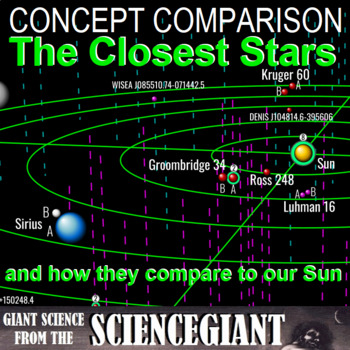
Concept Comparison: The Closest Stars and how our Sun Compares
Who are the nearest neighbors to the solar system? This Concept Comparison Frame looks at 376 stars within 32.6 light years of the Sun to find out who's hot, who's not, and who's just right to support planets and plant life in the "Goldilock Zone".Also included are a reading article on Gliese 720, which will have a close encounter with our Sun in 1.3 million years, passing within the Oort Cloud outskirts of our Solar Systemtwo math activities; a warm-up activity on mean, median and mode. It can
Subjects:
Grades:
6th - 12th
NGSS:
5-ESS1-1
, MS-ESS1-2
, HS-ESS1-3
, HS-ESS1-2
Also included in: StayGiant Earth Science Bundle: Astronomy (space exploration)
Showing 1-24 of 42 results





